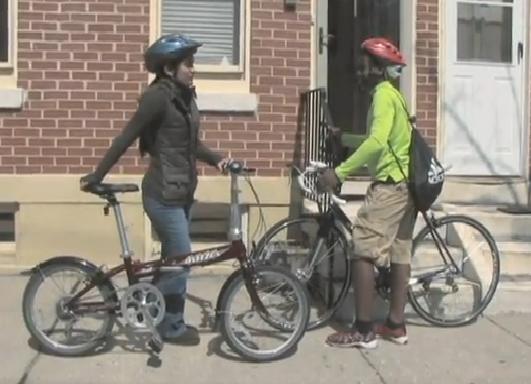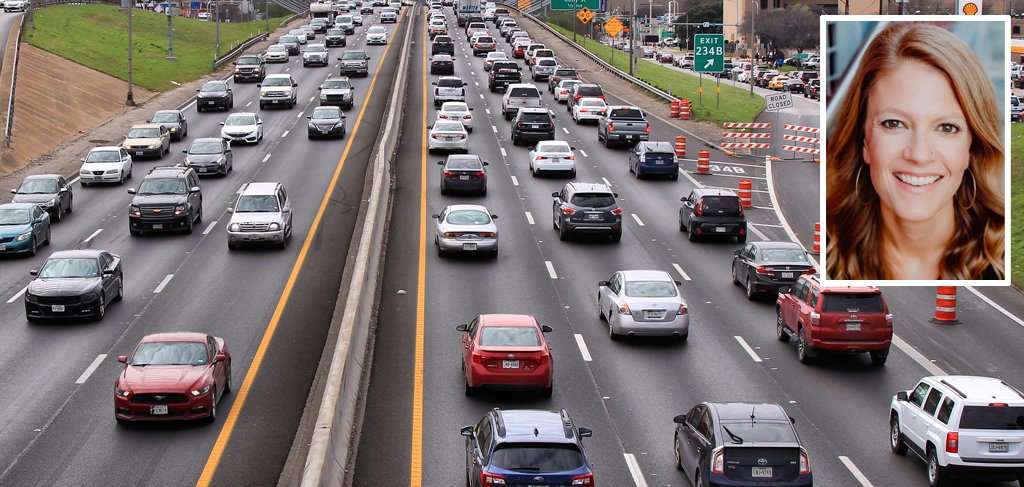Stimulus-Backed Programs Struggle to Stay Alive After Funds Run Out
11:44 AM EDT on June 29, 2011
In an old supermarket space in the Westlake neighborhood of Los Angeles, a diverse community of bicycle aficionados are getting greasy. Young and old, Latino and white, they are truing wheels and replacing cables and adjusting brakes in L.A.’s newest, and completely unplanned, bike co-op.
Bici Libre, as it’s called, got its start when the County Cycling Collaborative received a stimulus grant of $200,000 to spruce up “stray” bikes, with the help of volunteers gaining job skills. They rented the vacant grocery store to be just a warehouse to store the old bikes, but it quickly evolved into a hub of bicycle education, advocacy, and community.
But Bici Libre could disappear as quickly as it materialized. The stimulus grant that funds it runs out next March, and the CCC doesn’t know how – or if – it’ll be able to keep the new bike co-op alive.
Bici Libre is just one of many potential casualties of the boom-and-bust stimulus cycle. The American Recovery and Reinvestment Act breathed life into countless worthy projects, including many planning and education programs that promote green transportation, but they can’t all last forever. Some, like Bici Libre, are now scrounging for future funding. Others may just close up shop.
In Portland, for example, the Bureau of Transportation expanded its Smart Trips program, where people can order information about transit that runs through their neighborhood, a bike kit, a walking kit, or information about carpooling. A customized packet of information is then delivered to them by bicycle, along with a calendar of events like group rides for seniors or women.
Eight hundred thousand dollars of stimulus money launched a Smart Trips program for new residents and helped augment the programs that worked with schools and businesses. But that money will be spent soon. “Smart Trips to School is probably going to disappear,” said Marni Glick of PBOT. “The New Resident Program will probably disappear. And we will try to find funding for the Smart Trips Business.”
A pot of stimulus money called CPPW (Communities Putting Prevention to Work), distributed through the U.S. Department of Health and Human Services, aims to reduce obesity through nutrition and physical activity. Another branch of its work focuses on smoking cessation. The money is granted to city and state public health departments, which then partner with local nonprofits to carry out the work.
Several active transportation projects got funded this way, including Philadelphia's Safe Routes Philly program, which “promotes biking and walking as fun, healthy forms of transportation in Philadelphia Elementary Schools.” The Bicycle Coalition of Greater Philadelphia joined forces with the school district, the health department and the Food Trust (a local nonprofit working on nutrition issues) to start a campaign for healthier schools, funded at $680,000 over two years, thanks to the stimulus.
Philly's Safe Routes program had begun in November 2009 with a small Transportation Enhancements grant, but the stimulus money allowed them to expand it, training public school teachers in its newly developed curriculum around active transportation. Four full-time staff and two half-timers keep the program going.
Next March, the stimulus grant will end. “We knew what we were getting into,” said Breen Goodwin, education director at the Bicycle Coalition. “We always anticipated that there would be a huge period of growth, and then some contraction.”
Goodwin sees the stimulus funding as a major opportunity to build capacity, even if it is ephemeral. “In March of next year,” she said, “even if we lose all our funding, the teachers will still have everything they need to do the work.”
Of course, Goodwin is hoping they don’t end up at zero. She’s applying for funding through the CDC, the Philadelphia Public Health Department and the state Safe Routes to School program (though state rules make the latter a long shot.)
Those public programs will undoubtedly see a major uptick in grant applications next year as projects like Safe Routes Philly run out of stimulus money and look for a way to keep their work alive. After all, even if you knew going in that it was short-term, that doesn’t mean it feels good to abandon a worthwhile project.
The CDC is launching a new grant program just in time – its Community Transformation Grants were authorized last year by the health care reform law. The program is accepting its first cycle of applicants, with submissions due July 15 – just in time for some projects that are facing the expiration of stimulus funds. But the CTG grants will only total $102 million for 75 grants -- far short of the $650 million offered by the CPPW program, and with very similar program priorities. Perhaps the Community Transformation grants will be able to keep some programs like Bici Libre alive -- but not all of them.
In addition to Bici Libre, L.A. County also got $240,000 to create a regional bike plan for seven cities in the county, wealthy beach communities and poorer inland areas alike.
“We just have too many people in too many cars. So we like pitching it with the idea that everyone who chooses to bike, that’s one less car on the road,” said Jen Klausner, executive director of the Los Angeles County Bicycle Coalition. “We want motorists to hear the message that cities that have a lot of people riding bikes in them are healthy, livable cities. And we want them to stop shaking their fists at us and running us over.”
The Bicycle Coalition and its partners were able to build strong relationships with the seven cities’ governments and they’re getting close to finalizing a plan. But then what? Like so many federal planning grants, the grant they got for the regional plan doesn’t help fund implementation.
It would have been great if the stimulus grant included even a tiny percentage for a pilot project, Klausner said, or if it lasted four or five years instead of two. That way, Bici Libre would have a greater shot at sticking around past March. If it survives, it’s because the community rallies around it. But in a low-income neighborhood, in a country still battling its way out of a deep recession, there just aren’t enough replacements out there for the infusion of stimulus funds that launched these programs.
Note: the first version of this post mistakenly stated the Community Transformation Grants as totaling $900 million. Thanks to reader Ann Whidden of the Prevention Institute for pointing out the error.
Stay in touch
Sign up for our free newsletter
More from Streetsblog USA
‘We Don’t Need These Highways’: Author Megan Kimble on Texas’ Ongoing Freeway Fights
...and what they have to teach other communities across America.
Should Wednesday’s Headlines 86 SUVs?
American tax law encourages people to buy the gas-guzzling and deadly vehicles, but some in Canada are pushing to ban them.
Tuesday’s Headlines Fix It First
How voters incentivize politicians to ignore infrastructure upkeep. Plus, are hydrogen trains the future of rail or a shiny distraction?
Why We Can’t End Violence on Transit With More Police
Are more cops the answer to violence against transit workers, or is it only driving societal tensions that make attacks more frequent?
Justice Dept., Citing Streetsblog Reporting, Threatens to Sue NYPD Over Cops’ Sidewalk Parking
The city is now facing a major civil rights suit from the Biden Administration if it doesn't eliminate illegal parking by cops and other city workers.






